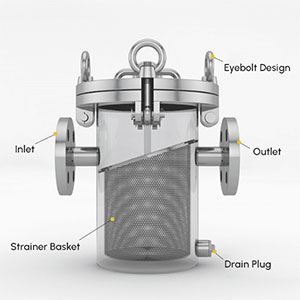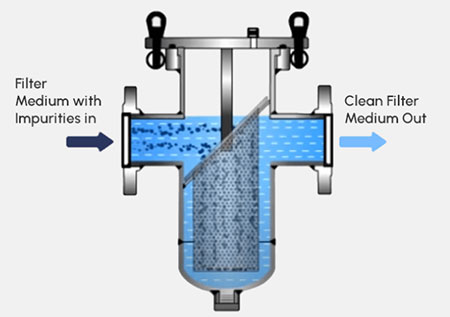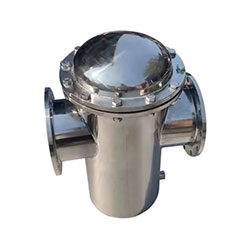Basket Strainer Basics: Applications, Advantages and Working Principle
Basket strainer is a common liquid filtration equipment, used for oil or other liquid pipeline and filtering debris in the pipeline, the filter pore area is greater than 2-3 times larger than the area of the through pipe, far more than the Y-type, T-type filter area. The basket strainer has the best precision among filters, and its structure is different from other filter screens. Due to its shape resembling a basket, it is named a basket strainer.
Basket strainers filter by passing liquid through a set of baskets with specific pore sizes. During this process, pollutants will be intercepted in the basket, and clean liquid will flow out. Thus protect downstream equipment (such as pumps, valves, and pipelines) from damage or blockage caused by particulate matter.
Structure of Basket Strainer
Basket strainers typically consist of the following components
- Inlet and outlet: The inlet and outlet are used to introduce and discharge the liquid to be filtered into the basket strainer.
- Basket: Basket is the most important part of the entire equipment, usually made of metal materials with specific pore sizes. The pollutants will be intercepted in the basket, and clean liquid will flow out.
- Bracket: The brackets are used to support the basket and are fixed inside the equipment.
- Relief valve: Relief valve is used to release excessive pressure to protect equipment from damage.
Working Principle of Basket Strainer
When the liquid to be filtered enters the basket strainer, it first passes through the inlet and flows into the equipment. Then, after being fixed by the bracket, the liquid begins to flow through the basket. During this process, pollutants will be intercepted in the basket, and clean liquid will flow out.
The working principle of the basket strainer can be summarized as the following steps:
- Inlet: Liquid enters the equipment from the inlet.
- Basket: The liquid flows through the basket, and the pollutants inside are intercepted in the basket.
- Outlet: The filtered clean liquid flows out from the outlet.
- Relief valve: When the internal pressure of the equipment is too high, the relief valve automatically opens to release excess pressure.

Application Fields of Basket Strainer
Basket strainers are widely used in various industries and fields. For example:
- Weak corrosive materials in chemical and petrochemical production, such as water, nitrogen, oil products, hydrocarbons, etc.
- Corrosive materials in chemical production, such as caustic soda, concentrated sulfuric acid, carbonic acid, acetic acid, etc.
- Low temperature materials in refrigeration, such as liquid methane, liquid ammonia, liquid oxygen, and various refrigerants.
- Materials with hygiene requirements in the production of light industrial food and pharmaceuticals, such as beer, beverages, dairy products, grain slurry medical supplies, etc.
- High efficiency filters with various special processes.
Advantages of Basket Strainer
Basket strainers offer several advantages that make them a preferred choice for many industries and fields:
- The basket strainer can effectively remove pollutants and keep the liquid clean.
- The structure of the basket strainer is simple, easy to maintain and clean.
- The basket strainer can adapt to different liquid flow and pressure requirements.
How to Maintain Basket Strainer
Maintaining a basket strainer is important to ensure it continues to function effectively in removing solid particles from fluid or gas flows. Here are some steps to help you maintain a basket strainer:
- The core part of the filter is the filter core, which is composed of a filter frame and a stainless steels wire mesh. The stainless steels wire mesh is a vulnerable component that needs special protection.
- After a period of operation of the filter, a certain amount of impurities settle in the filter core. At this time, the pressure drops increases and the flow rate decreases. It is necessary to promptly remove impurities from the filter core.
- When cleaning impurities, special attention should be paid to the stainless steels wire mesh on the filter element not being deformed or damaged. Otherwise, the purity of the medium filtered by the reinstalled filter may not meet the design requirements, and equipment such as compressors, pumps, and instruments may be damaged.
- If deformation or damage is found to the stainless steels wire mesh, it needs to be replaced immediately.


